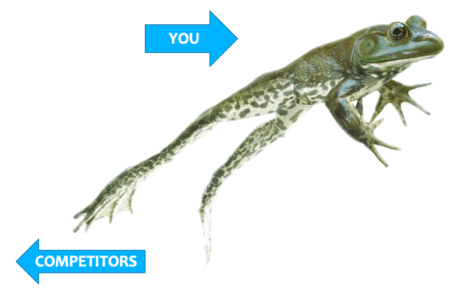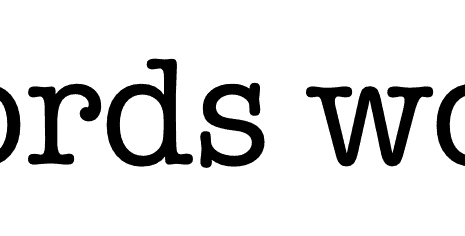
Presenting? Here’s how to handle tough audience questions
Have you noticed that fewer and fewer presentations leave time for audience Q&A? I’m not sure if this trend is due to conference organizer rules, presenters not wanting to take questions, or both.
But I don’t like it. And if you are a presenter, you shouldn’t either.
If you are presenting, audience Q&A is the most valuable part of your presentation. That’s when you learn if your message was heard. That’s when you learn how interested the audience was and if they want to learn more.
Live Q&A can be daunting. It doesn’t have to be.
Prepare, prepare, prepare
First, as you’re preparing your presentation, ensure you’re also prepared to answer audience questions. Working with a simple, concise Message Map will help you both prepare your presentation and be well-prepared to answer questions.
Next, make sure you know your audience. Research them as thoroughly as you can. Most conference and event organizers are happy to spend a little time on the phone with you. They want your presentation to be a success as much as you do.
Make sure you also practice your presentation, and make a list of questions you might have if you were in the audience. You can also share your presentation with your colleagues and ask them what questions they would have.
If several people ask you the same question, consider adding the material to your presentation, so you don’t leave the audience wondering something important during your talk.
How to handle difficult questions
Even with the right preparation, skilled presenters can get nervous about tough questions. But with the right tactics, you can address difficult questions smoothly.

Here are tips for handling four types of difficult questions (or even lack thereof) during Q&A:
- An audience member had a bad experience with your company’s product or service.
Research shows that when companies respond quickly and well to customer complaints, those customers often become more loyal and spend more money with the company in the future.
If you get this type of question, first express regret that the person had an issue, then offer to get their information after your presentation so you can get them the help or answer they need. Doing this will both appease the questioner and let other audience members know that you and your organization care about clients.
The key to success here is to make sure you follow up and help the customer. If you don’t, you risk them calling you out personally on social media or elsewhere. - An audience member asks a question completely off the topic of your presentation. Though it may be surprising, this is one of the easiest questions to address, for two reasons. One, you don’t have to answer it. You only have to explain why you’re not answering it. And two, it gives you the perfect opportunity to get your key message heard one more time.
How does this work? First, explain why you can’t answer the direct question. I usually say, “thank you for your question, but I was asked here to speak on (your topic and key message), and your question is not related to that topic. However, please find me after my talk, and I can find a way to help you.”
Even if you do know the answer, do not answer off-topic questions during your Q&A. Doing so distracts the audience from your key message and could prompt other audience members to ask other off-topic questions.
Addressing the question in this manner lets the questioner and the rest of the audience know you are helpful, but also that you are respectful of the fact that the general audience is there to here you speak about the specified topic. - An audience member asks about a rumor about your organization or one of its employees. This is another question that may seem daunting but is actually easy to deal with. While it may be upsetting that now your entire audience has heard this not-so-great “news,” you again have the ability to state: I was asked here to speak on (your topic and key message), and your question is not related to that topic.
Only this time, instead of offering to get an answer for them, I highly recommend stating that for competitive and confidential reasons, your company does not discuss rumors or speculation. In saying this, you are letting the questioner know that they will not get an answer, but you’re giving a good reason why. - No one in the audience asks a question. First of all, you can sometimes prevent this by letting the audience know at the beginning of the presentation that you will leave time for Q&A at the end. This way audience members know they will have a chance to ask a question and can prepare themselves for the opportunity.
If, even though you prepared them, still no one asks a question, then either prepare the conference moderator to ask one or have some ready yourself. For example, you can say, “I’m often asked…” This will give the audience more time to ask a question and give you yet another chance to cover your key message in the answer.
Above all, remain calm
Remember that perception is reality, so avoid fidgeting or other nervous tics. While for you it may simply be nerves, audience members may think you are lying. When you practice your presentation, practice Q&A too.
Have a colleague, friend, or family member ask you questions. Focus on breathing and remaining calm. Smile, look at each questioner, and pause if you need to.
While giving presentations can be a great way to get your company’s story heard, audience Q&A can be daunting. With a well-prepared message and tactics for handling tough questions, you can successfully handle a Q&A session that will give you insight into how your audience reacted to your presentation.
For more tips on how to deliver on-message communications, subscribe to our blog.
Related Posts
10 Marketing Ideas to Help You Leapfrog The Competition in 2023
Top 10 blogs focus on message maps, content marketing, and presentations Leapfrog the competition in marketing. We learn lots from readers like you —...
Include Your Audience When Presenting to Truly get Your Message Heard
I wrote previously about the Golden Rule of Speaking, which is to respect your audience. But to truly get your message heard, you also...
Virtual presentations: What you need to know to succeed.
Virtual presentations: Will they be the new “normal”? The conference you submitted to speak at accepted your proposal. You were geared up to travel...
Who understands healthcare content?
Facing a life-threatening illness, Ahava Leibtag combed the Internet for every single bit of information about her condition. But the content she found didn’t...





